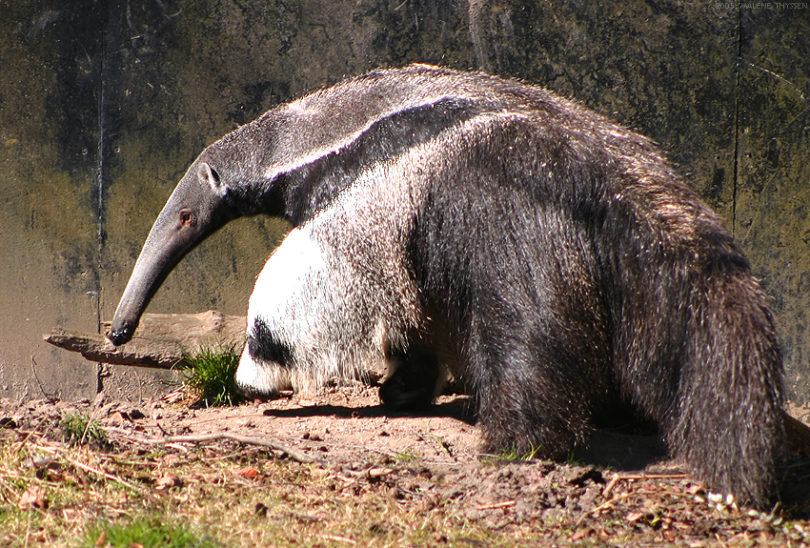The anteater belongs to the Vermilingua suborder, which translates to “worm tongue.” The four different species of anteaters are the giant anteater, silky anteater, northern tamandua, and southern tamandua. Except for the giant anteater, listed as vulnerable on the IUCN Red List, anteaters are common across Central and South America.
Aardvarks and echidnas, two creatures with long snouts, are frequently mistaken for anteaters. Small African mammals known as aardvarks belong to the Orycteropodidae family. Although they share several morphological traits, aardvarks have long ears and almost no fur, whereas anteaters have a lot of fur and small ears. Echidnas, sometimes known as “spiny anteaters,” are Australian and New Guinean egg-laying animals.
The anteater’s many misconceptions will be clarified by the information provided here.
1. Spines Cover the Anteater Tongues
Anteaters’ significant means of food collection is using their tongues. These two-foot-long organs are coated with tiny, spiky protrusions and gooey saliva. The anteater can fit its tongue into the tight crevices where termites and ants burrow thanks to form and design. Anthills and termite mounds are no match for the anteater, which quickly flicks its tongue to acquire prey and eats hundreds of them at once.
2. Their Claws Are Knife-Like
Despite having four feet, only the front toes are equipped with claws. Interestingly, anteaters preserve their claws and avoid dulling by curling their feet into fist-like balls when walking. Anteaters’ expertly crafted tongues are only one of many uses for their razor-sharp claws. The animal’s strongest weapon against assaults is its very lethal claws.
The primary predators of anteaters are large cats like pumas and jaguars. Anteaters defend themselves by standing on their hind legs and attacking with their claws when threatened. Anteaters also pry insect nests using their claws to devour the contents.
3. Anteaters Do Not Only Consume Ants
The typical gigantic anteater consumes up to 30,000 termites and ants every day. They scoop and suck up their food with fast flicking actions that reach several hundred per minute. They do, however, consume other foods daily. They have even been observed scavenging bees, fruit, bird eggs, worms, and other insects. Anteaters don’t drink much; most of the water they require comes from their diet.
4. Anteaters do not have teeth
An animal without teeth is referred to as an edentate in scientific jargon. Edentates include armadillos and sloths.
As their tongues and claws do all the work when it comes to foraging, anteaters don’t seem to have any concerns with their lack of teeth. In addition to helping the tongue, their snouts act as a vacuum to capture the insects and ingest them via sucking. Additionally, teeth are not required since they consume ants and termites because there is no rough flesh to chew on or bite into.
5. Their Body Temperature is the Lowest of All Mammals
The anteater has the lowest body temperature among land animals, at about 89.6 degrees Fahrenheit. Despite the vast quantity they eat, their major dietary staple has little to no nutritional or calorie value. Their bodies, however, adjust by saving energy wherever they can. Anteaters move slowly, spend most of the day sleeping, and utilize their hair and tails to keep warm. An anteater rarely engages in prolonged, physically demanding activities like swimming, sprinting, or climbing.
Sadly, people cause the gigantic anteater immense suffering. South America’s populations, classified as vulnerable by the IUCN, have suffered due to the burning of sugar cane plantations. They are killed by automobiles and dogs and fire-related deaths and injuries. According to the IUCN, “Giant anteaters are sought for food across their range and are also hunted as a pest, for pets, or the illegal trade in some sections of their range.”
The number of gigantic anteaters in the wild is unknown, although they are becoming “unusual to endangered.”

